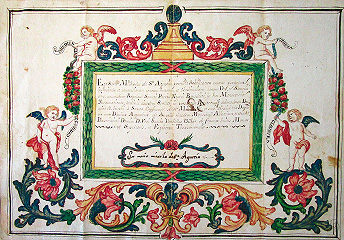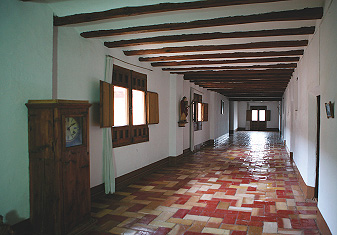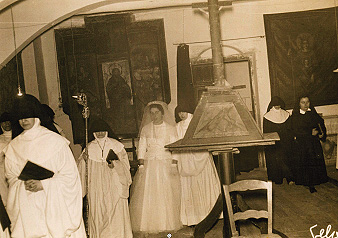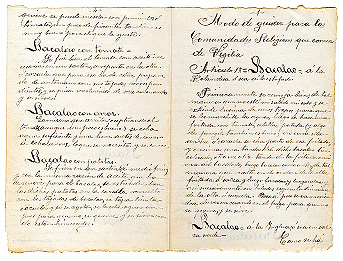August 18
Global Seminars & Invited Speaker Series
HERITAGE AND ENCLOSURE
Cloisters of Navarre: Beyond material heritage
Ricardo Fernández Gracia
Chair of Navarrese Heritage and Art
Last year 2018 was declared "European Year of Cultural Heritage" in order to encourage discovery and engagement with heritage, reinforcing the feeling of belonging to a common space. The motto adopted was "Our heritage: where the past meets the future". Through different initiatives and activities, we tried to make citizens understand the relationship between cultural heritage and the identities of their peoples. On our part and with the sponsorship of the Fuentes Dutor Foundation, we were able to carry out a project of research and publish the results in a monograph on everything that has secularly surrounded the female cloisters of Navarra: from their buildings, adornment and endowments, to their rich intangible heritage in terms of customs and festive celebrations. The project of research wanted to be in tune with the recommendations of UNESCO and its dependent organizations that constantly remind us of the threats to tangible and intangible heritage and the need to preserve living cultures, threatened by globalization.
The degree scroll of the monograph is Tras las celosías. Patrimonio material e inmaterial en las clausuras de Navarra (Pamplona, Fundación Fuentes Dutor - Universidad de Navarra, 2018).
Nowadays, it is difficult to evoke the daily life of the different social groups of past times, in its different facets -celebrations, ordinary life, uses and customs-, at a time when the consumer and information society sweeps and unifies with great speed. In order to reconstruct part of that past, we have some important sources of information, which are also found in women's cloistered monasteries. The fact that the communities have continued to live, in many cases and in spite of the vicissitudes of history, in the same building of their foundation, and to have inherited centuries-old traditions, make the monasteries unparalleled testimonies on numerous aspects of their collective conscience and keys to their religiosity. All this evokes and takes us to customs of the society of the Hispanic Golden Age, being a mirror of some social uses of those times with which we can reconstruct, to a great extent, some facets of the daily life of past generations.

Letter of profession in the Benedictine Sisters of Corella of Sister María Micaela de San Agustín, 1725.
In recent years, several female cloisters have Closed their secular enclosures and others are currently experiencing difficult times due to the lack of vocations. Therefore, it is more necessary than ever to draw attention to their material heritage and, above all, to the immaterial heritage linked to customs, feasts, food, devotions... etc. Thanks to numerous notes extracted from long surveys carried out at different times and for decades, we can know and recreate many aspects of their daily life, in order to value this rich cultural heritage treasured over centuries within the walls of monasteries and convents.
Regarding the material, we cannot forget that much of this heritage was generated by the initiative and will of founders and orders, and has been preserved thanks to the care, delicacy and dedication of the nuns who have lived their vocation within their cloisters. And here we come to something substantial in the whole topic: the vocation of its dwellers. In this regard, we must remember that, regardless of times and fashions, of more or less grilles and more or less heavy habits, this rich heritage has been living harmoniously with religious life for several centuries.
In this intervention, in the monastery of Tulebras, we focus on aspects that have to do with the daily life of the nuns, the festivities within the walls and others with projection in the territories of influence of the different communities. The traditional cuisine, musical traditions and everything subject can be evoked thanks to photographs and figurative arts that go far beyond their aesthetic values.
Throughout the dissertation, we point to issues that today can cause attention and surprise, such as customs, ordinary and extraordinary food, stews and desserts of the conventual cuisine, devotional practices, music, etc... etc. Much of this has survived until very recently due to the fact that the communities have continued to live, despite the ups and downs of history, in the same construction of their foundation and to have inherited centuries-old traditions. plenary session of the Executive Council Think of the egg mol of the Augustinian Recollect Nuns of Pamplona, prepared until recent times and which was required in the 17th century for Prince Balthasar Carlos on his visit to the capital of Navarre in 1646.

High cloister of the Capuchin nuns of Tudela, 1749-1753.
The intangible heritage, as we have indicated, is in serious danger of disappearing forever, because for the last four or five decades everything has been standardized also in the cloistered world. Customs, prayers, devotions and secular recipes have been swept away and only remembered by the last generation of nuns who lived the reality before the sixties of the last century.

Solemn profession at the monastery of Tulebras in 1963.
From the hand of the sets of the letters of profession of the Benedictine nuns of Corella and Estella, we were able to recreate how much the entratic and the whole ceremonial of the profession in the different convents and monasteries meant. The texts of ceremonials, rituals and rules allowed us to enter into the daily life, always governed by the ringing of the bell or the tile in the case of the Capuchin nuns of Tudela; Christmas customs, with the installation of the nativity scene, Holy Week, the intense penitential Lent or Easter and Pentecost, as well as everything related to the cults to the Blessed Sacrament, the Virgin and the saints that can be glossed by the hand of images, goldsmith objects, jewelry, textiles and other pieces of sumptuary arts. Cuisine, traditional recipes, artisan nuns, writers, poets and musicians were also the subject of the dissertation.

Recipes for preparing codfish in the Carmelitas Descalzas de San José de Pamplona.
Surprisingly, the unknown monastic and conventual life reveals itself to us as a rich store of spirituality and an extraordinary experience of the cycles of the liturgical year, while at the same time constituting a coherent whole where we can trace traces of the piety of past eras. Finally, we emphasized the consideration of how these convents have historically modulated the spirituality of the social environments in which they are located.
